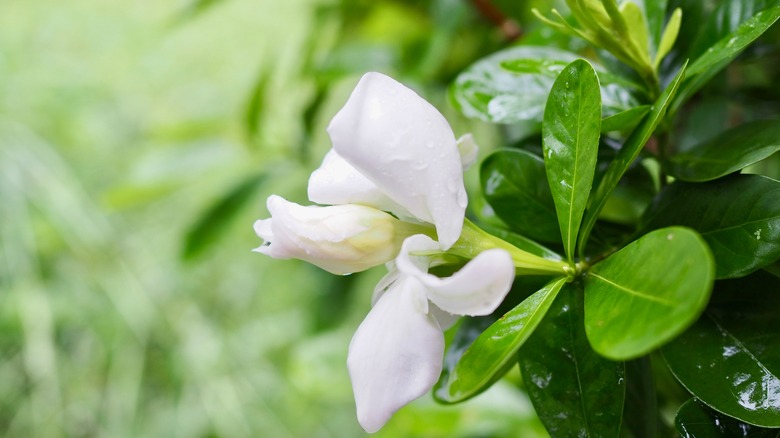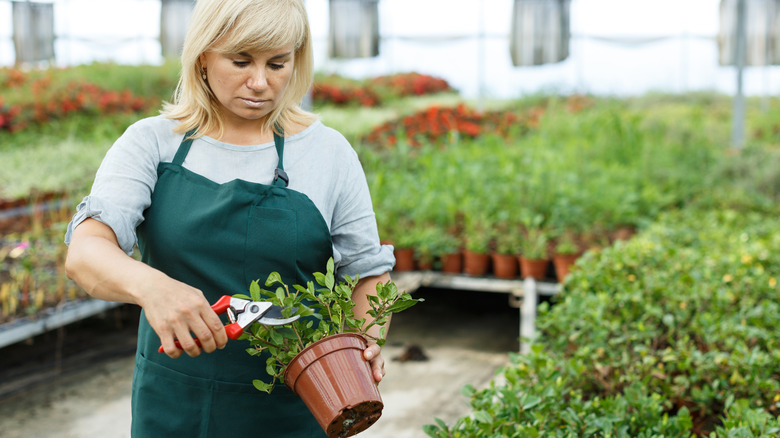The Pruning Mistake That Is Causing Your Gardenia Not To Bloom
Are you looking at your gardenias with disappointment because they're just not giving you those gorgeous, fragrant blooms that you've been looking forward to? While gardenias can fill your summer garden with a heady scent that's impossible to miss, you could be making a common pruning mistake that's preventing your plants from flowering. Aside from choosing the best spot in your garden to plant gardenias, one of the mistakes to avoid if you want healthy flowering plants is pruning them before they bloom. Many gardenias develop their flower buds on old wood before the cold weather sets in. In saying that, you'll find that some of the newer cultivars will also bloom on the new season's growth, which means they'll delight you with a second flush of flowers.
Before pruning gardenias, the first thing to do is to identify which type of gardenia you have to decide whether it will just flower once during summer or give you a second lot of blooms. The most common species of gardenias are Gardenia jasminoides and Gardenia thunbergia. These will set their flower buds in the fall just before they enter dormancy. New cultivars, such as Gardenia jasminoides 'Crown Jewel,' will flower on both old and new growth. If you have one of these hybrids, you should still end up with some lovely fragrant blooms later in the season, even if you prune them at the wrong time.
When is the correct time to prune gardenias?
Firstly, it's important to note that gardenias don't need a lot of pruning because they naturally have a nice growth habit. But no matter what type of gardenia you're growing, if you follow this guide, you should avoid issues with your plants not blooming. Essentially, the only time you want to prune your gardenias is immediately after they've finished flowering. Depending on your location country, this will be anywhere from May to August. Refrain from pruning your plants during the budding season (September to March), as this is likely to result in a lack of blooms because you could end up removing all the flower buds that have already set.
Even if your gardenias have suffered some damage over winter, you should wait until spring, when new growth emerges, before you remove any of the old stems. Keep in mind that if you have a cultivar that will bloom a second time, you still want to complete any necessary pruning immediately after the first lot of flowers have finished. While this might reduce the amount of blooms you get during the second flush, it will ensure that you won't remove any of the following season's flower buds. Now that you know how to prune your gardenias the right way, you might be interested to know that these delightful garden specimens are also some of the best fragrant plants to include in your patio container garden.

